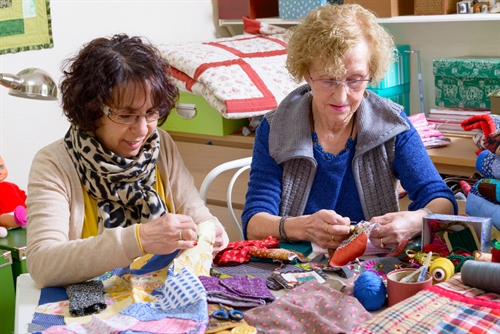Some antique or heirloom textiles can be used day to day, but others are too fragile or precious for use and you may just enjoy owning them for history’s or sentiment’s sake. To ensure textiles stay beautiful for years to come it’s vital to store them in the right way.
Get advice first
Whatever your plans for your antique textiles, if they are worth a lot of money or have a lot of sentimental importance we recommend you get them assessed and valued. Once you have an idea of their value, consider whether professional conservation is appropriate, and whether you want to insure them. You should certainly do this if you plan to cut up a textile and repurpose undamaged parts.
Antique textiles may have problems that cannot be fixed
Unfortunately, some antique textiles, no matter how carefully you store them, will be very fragile and likely to fall to dust while they are in your care. This is not your fault. Sometimes the processes used in the manufacture of fabrics is to blame. Exposure to light often accelerates the problem. The best you can do is to enjoy the piece while you have it and do your best to slow its decay.
Where to store antique textiles
Antique textiles do best in a place that is clean, cool, dry and dark. You should also protect them from changes in temperature and humidity. This is why it’s best not to keep them in an attic. If you have a room with a relatively stable environment, then that’s great. But if not, consider moving them to a temperature-controlled storage unit.
Clean before you store
Sharp dust particles can sever fibres, so clean your textiles before you store them. Some items can be safely washed. But others will not be washable. A very gentle vacuum cleaner and a mesh screen may be of use – but be careful with samplers and beadwork as threads and tiny beads can come loose in the process.
Fabric treatments like ironing, starching and bluing should be avoided before putting your textiles away.
Avoid folding antique textiles
If you can, store your textiles flat – but obviously that is not practical with a bed-sized quilt. Pad the folds with clean old cotton sheets or pillowcases. Tissue paper should not be used because even those claiming to be acid-free can damage textiles.
Cloth-covered cardboard tubes can be useful for rolling pieces if that seems more suitable than folding.
Fabrics should not be sealed in plastic bags or containers as they do not do well in an airtight space. Also, plastics give off volatile compounds which can react with the fabric causing damage.
Protect antique linens from pests
Moths love natural fibres, so it’s vital to protect your textiles from these winged horrors. Follow the advice in our blogposts on protecting from pests in storage:
- How to protect your stored clothes from moths
- Prevent mildew in self-storage
- Protect your possessions from pests
Check up on your stored textiles
You can’t just store and forget antique textiles. So, make regular checks to ensure all is well. Re-packing textiles will also disturb moth larvae and prevent them from causing damage. It’s helpful to refold linen and quilts in a different configuration to reduce the stress on fibres.
More information about caring for antique textiles
The Victoria and Albert Museum in London has a series of articles about caring for antique textiles and domestic fabrics:
Self-storage: a steady, reliable environment for antique textiles
Temperature-controlled storage is the ideal environment for antique textiles, and if you want to do the best thing for your heirlooms you should consider it. The cost of self-storage varies depending on the facilities available, but the cost is not large for a small collection, particularly when you factor in the peace of mind you get. We’ve got a post to help you cost up storage. And don’t forget to find out how much self-storage insurance is. Insurance will be required by all reputable self-storage companies. Some of them will offer you their own insurance, but you don’t have to accept that quote as there are other providers, us included. Get a quote today for your self-storage insurance and see how much you can save with Store and Insure.


